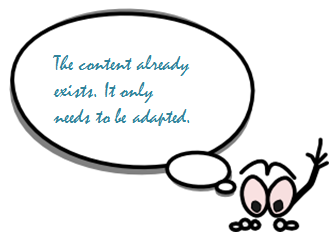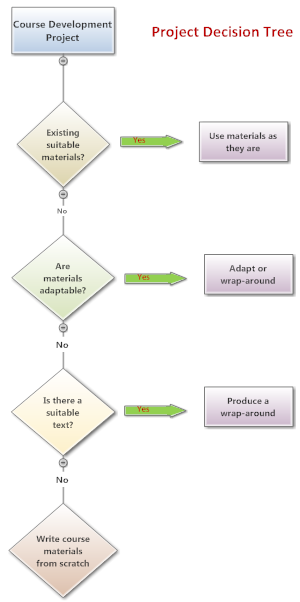Creating vs Adapting Content
 Famous last words! :-) There are three ways you can go about creating your course:
Famous last words! :-) There are three ways you can go about creating your course:
- You can write the content from scratch
- You can adapt existing materials to produce your course
- You can create a guide to an existing resource, such as a textbook, for example. This is typically called a "wrap-around" solution
Creating a Course from Scratch

If there are no existing materials or resources in a particular subject-matter, at the depth and breadth you need or even in the language you need, you may consider writing your course content from scratch. Writing your own materials is a lengthy and costly process. From planning, to writing, reviewing, editing and piloting, you will be looking at a minimum of 6 months for a short course and up to a year for a bigger project. However, it gives you great flexibility in designing the content according to your own needs and context. Nowadays, with the growing access to quality OER, writing your own content, supplemented by external resources may be a good compromising solution that will offset the cost of writing content from scratch.
Adapting an Existing Course
Adapting existing content for your course may be a faster alternative and not as costly, depending on the suitability of the existing resources. However, it can turn into a more complex and time consuming task than anticipated and can derail online course development projects. Having said that, if content about a topic is already available it certainly is worth a careful analysis to determine the extent of the changes that will be required, if any. The increased availability of OER over the last decade has certainly made adapting of existing materials a more viable approach to course development. Rubrics such as the ones found on the Achieve site, are a very effective tool to help you determine suitability of the resources.
Creating a "Wrap-Around" Course
The "wrap-around" approach is one that can save you some time, provided that you have a quality resource to work with. If there is a good print manual for example, you may be able to get away with creating additional content, contextual examples and online activities to build on the print materials to develop your online course. This will definitely save you some time and will be a less costly approach.
